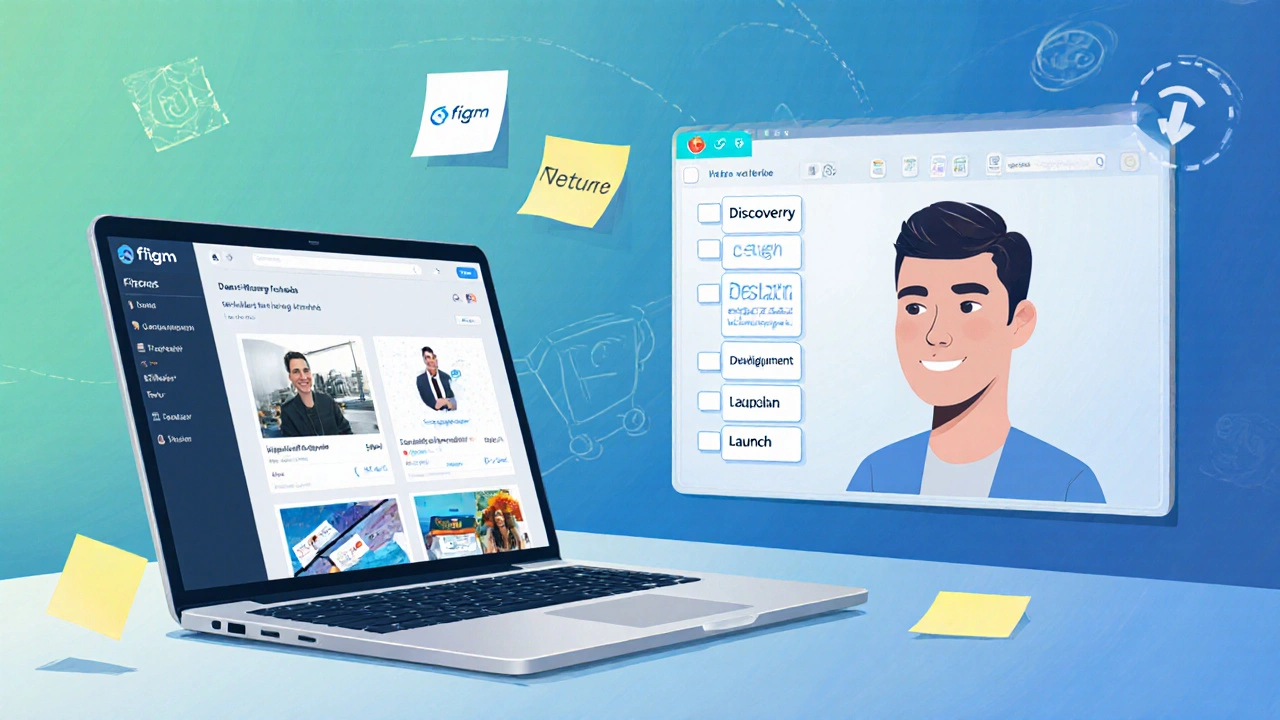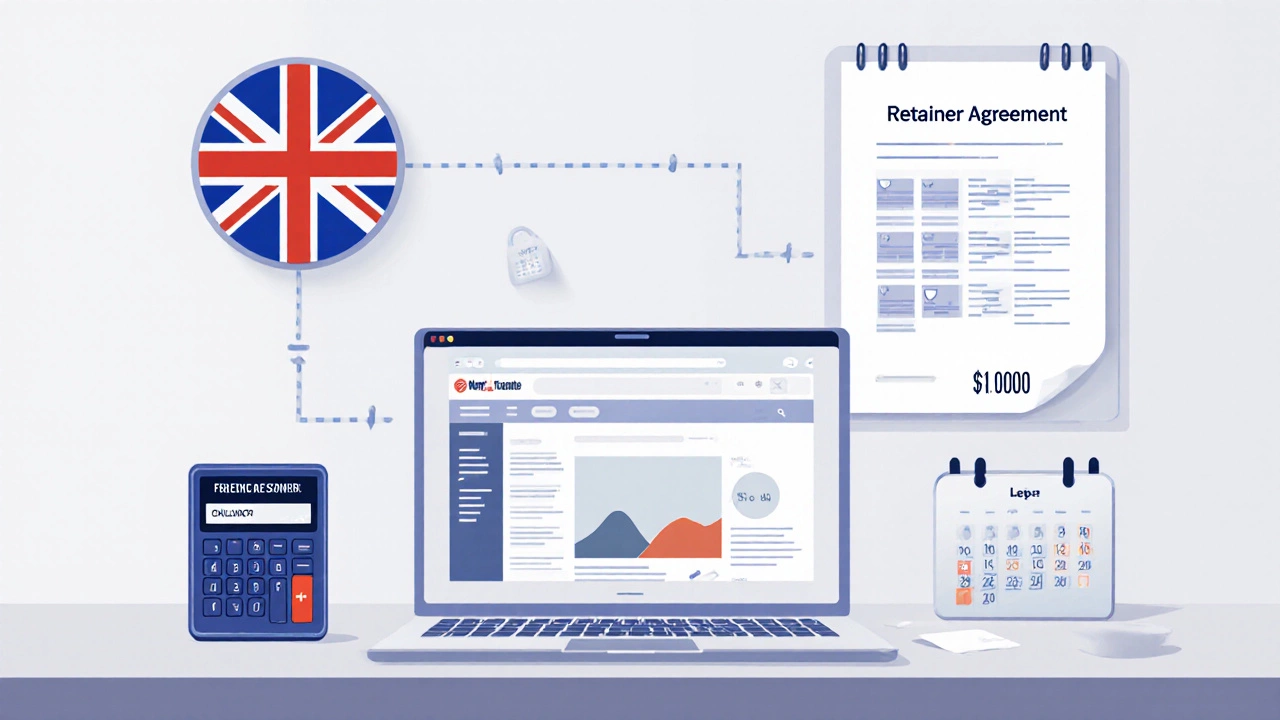Freelance Web Developer Income Calculator
Estimate Your Potential Earnings
Calculate your realistic annual income based on your experience level and pricing model.
Estimated Annual Income
In 2024 freelancers pulled in more than freelance web developer earnings than any other tech niche, and the gap between hobbyist coding and a full‑time paycheck is wider than ever. If you’re wondering whether you can truly support yourself by selling code, this guide breaks down every piece of the puzzle - from realistic income numbers to the daily habits that keep the cash flowing.
Understanding the Freelance Web Development Landscape
Freelance Web Developer is a self‑employed professional who builds, maintains, or optimises websites for clients on a contract basis. The market is split between short‑term gigs on platforms like Upwork and long‑term retainers with agency‑size clients. According to the 2025 Global Freelancer Survey, 42% of web‑focused freelancers report annual earnings above $80,000, while the top 10% break the six‑figure mark.
Two trends dominate the scene:
- Specialisation - niches such as e‑commerce, headless CMS, or accessibility command higher rates.
- Remote‑first culture - clients no longer care where you live, only that you deliver on time.
How Much Can You Earn?
Income depends on three core variables: experience level, pricing model, and client mix. Below is a quick snapshot of average earnings in 2025 (USD):
| Experience | Hourly Rate (USD) | Projects/Year | Estimated Income (USD) |
|---|---|---|---|
| Junior (0‑2 yrs) | $30‑$45 | 30‑40 | $45,000‑$70,000 |
| Mid‑level (3‑5 yrs) | $50‑$80 | 25‑35 | $80,000‑$140,000 |
| Senior (6+ yrs) | $90‑$150 | 20‑30 | $150,000‑$250,000 |
These numbers assume a balanced client portfolio - a mix of quick fixes, medium‑scale builds, and at least one retainer worth $2,000‑$5,000 per month.
Setting Your Rates: Hourly vs Project
Hourly Rate is the amount you charge per hour of work. It offers flexibility for small bugs or ongoing support, but clients can balk at vague totals. Project‑Based Pricing fixes the fee for a defined scope, giving both sides budget certainty.
When deciding, weigh these factors:
- Scope clarity - If requirements are fluid, hourly protects you from scope creep.
- Value perception - High‑ticket projects let you showcase expertise and often command premium rates.
- Cash flow - Hourly can stall if a client is slow to approve time logs; milestones on projects keep money moving.
A hybrid approach works for most freelancers: charge a modest hourly rate for discovery and then lock in a flat fee for the build.
Finding Clients Without Burning Out
Client Acquisition is the process of attracting and onboarding paying customers. Relying solely on platforms like Upwork (Upwork is a global freelance marketplace connecting freelancers with short‑term and long‑term contracts.) can lead to rate erosion. Diversify your pipeline:
- Referrals - Deliver outstanding work to a few clients, ask for introductions.
- Personal brand - Publish case studies on a personal site; SEO‑optimised blog posts draw organic traffic.
- Community involvement - Contribute to open‑source projects or speak at local meetups in Leeds; visibility translates to inbound queries.
- Cold outreach - Identify niche businesses (e.g., boutique wineries) and send a one‑page proposal highlighting their specific pain points.
Track every lead in a simple CRM (Google Sheets or a free tool like HubSpot) so you can see conversion rates and optimise later.

Managing Finances and Taxes
Freelance income is irregular, so financial discipline is non‑negotiable.
Tax Obligations for UK freelancers include Income Tax, Class2 National Insurance, and possibly VAT if turnover exceeds £85,000. Set aside at least 30% of each invoice in a separate savings account - this covers tax, pension, and a rainy‑day buffer.
Key tools:
- Accounting software - QuickBooks or Xero automate invoicing and expense tracking.
- Invoice templates - Include your UTR, payment terms, and a clear breakdown of services.
- Retirement planning - Open a personal pension; contributions are tax‑deductible.
Hire an accountant for the first year to set up a proper bookkeeping system; the cost (often $300‑$500) pays for peace of mind.
Building a Sustainable Workflow
Stick to a repeatable process to avoid burnout:
- Discovery call - Clarify goals, timeline, and budget.
- Scope document - List deliverables, milestones, and acceptance criteria.
- Design mockups - Use Figma or Adobe XD; get client sign‑off before coding.
- Development sprint - Break work into 1‑week sprints; deliver incremental updates.
- Testing & QA - Run Lighthouse audits, cross‑browser checks, and accessibility scans.
- Launch & handover - Provide documentation, training, and a maintenance plan.
By treating each project like a mini‑product, you minimise revisions and keep cash flowing on schedule.
Tools and Tech Stack That Pay Off
Portfolio is a curated collection of your best work, usually hosted on a personal domain. A polished portfolio can replace a sales pitch.
Invest in a stack that balances demand and profitability:
- Frontend - React.js (or Vue.js) paired with Tailwind CSS for rapid UI builds.
- Backend - Node.js with Express for API‑first projects, or Laravel for PHP‑heavy e‑commerce.
- Headless CMS - Contentful or Strapi, which many agencies now require.
- Deployment - Vercel, Netlify, or DigitalOcean Apps for zero‑maintenance hosting.
- Version control - GitHub with protected branches; clients appreciate transparent progress.
Charge a premium for services that include ongoing optimisation (Core Web Vitals, SEO audits, security hardening). Clients see higher ROI, and you secure recurring revenue.

Checklist: Is Your Freelance Business Ready?
- Do you have a professional Portfolio that showcases at least three full‑stack projects?
- Are your rates documented in both Hourly Rate and Project‑Based Pricing?
- Is your invoicing system automated and compliant with UK tax law?
- Do you track leads in a CRM and follow up within 48hours?
- Have you set aside 30% of every payment for taxes and savings?
- Is your tech stack aligned with market demand (React, Node, headless CMS)?
If you answered “yes” to most questions, you’re on solid ground to turn coding into a sustainable income.
Next Steps
Start by auditing your current rates against the table above. Then pick one client‑acquisition channel you haven’t tried yet - maybe a local business in Leeds that needs a refresh. Finally, build or refresh your Portfolio with a case study that highlights measurable results (e.g., 40% faster load time, 25% conversion lift).
Frequently Asked Questions
What is a realistic first‑year income for a freelance web developer?
Most new freelancers earn between $45,000 and $70,000 in the first 12 months, assuming they secure 30‑40 small‑to‑medium projects and keep a steady pipeline.
Should I charge hourly or per project?
Start with hourly for discovery and debugging, then switch to project‑based fees for full builds. The hybrid model gives flexibility while protecting you from scope creep.
How do I handle taxes as a UK freelancer?
Register as self‑employed with HMRC, set aside ~30% of each invoice, file a Self‑Assessment tax return annually, and pay Class2 National Insurance. If turnover exceeds £85,000, consider VAT registration.
What tools should I master to stay competitive?
A solid front‑end stack (React/Vue + Tailwind), a back‑end framework (Node/Express or Laravel), a headless CMS (Contentful, Strapi), and deployment platforms (Vercel, Netlify). Add GitHub for version control and a basic design tool like Figma.
How can I avoid the feast‑or‑famine cycle?
Build a retainer base: offer a monthly maintenance package (updates, security, performance tweaks). Even a few $500‑$1,000 retainers smooth cash flow between big projects.





